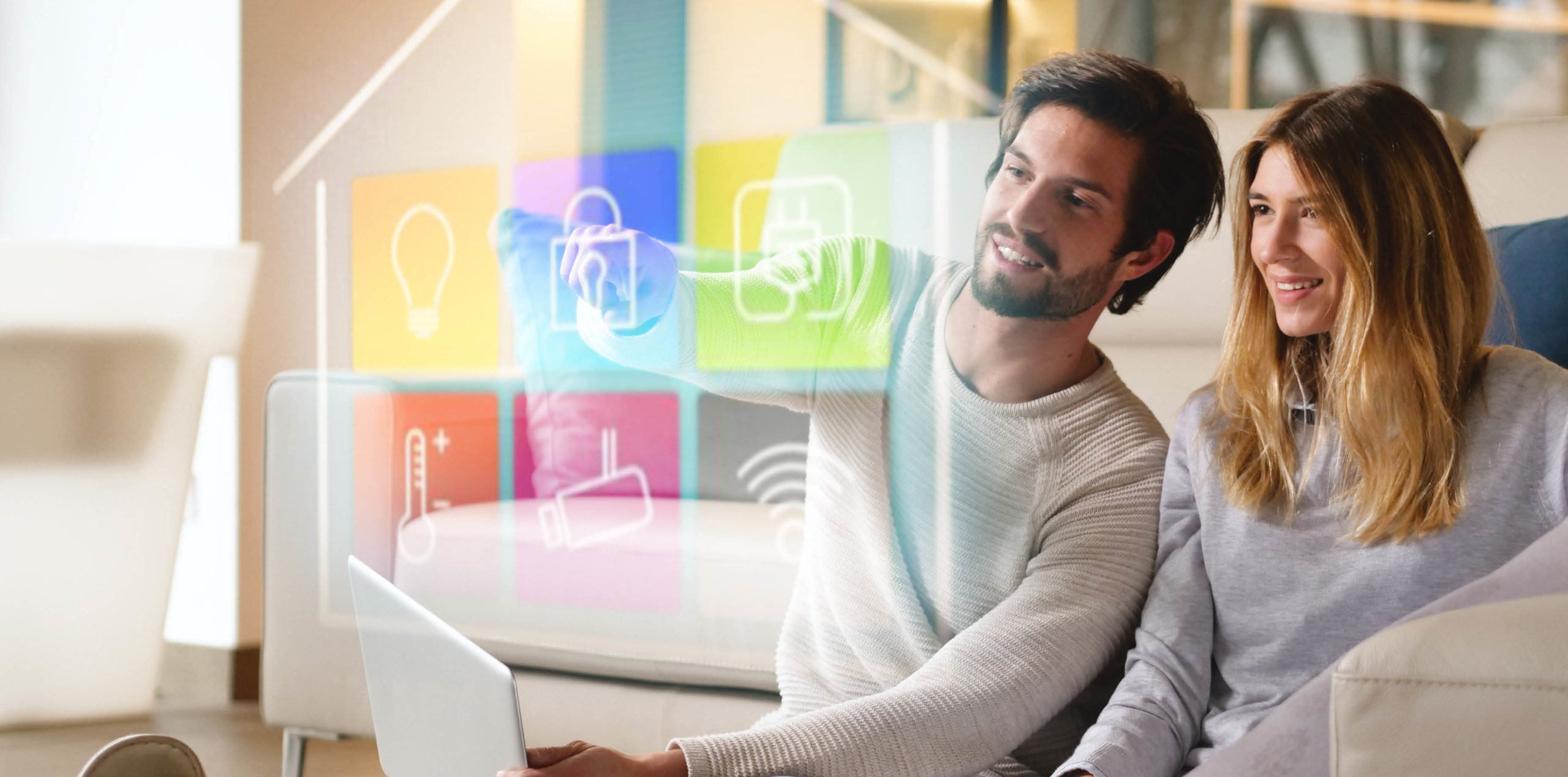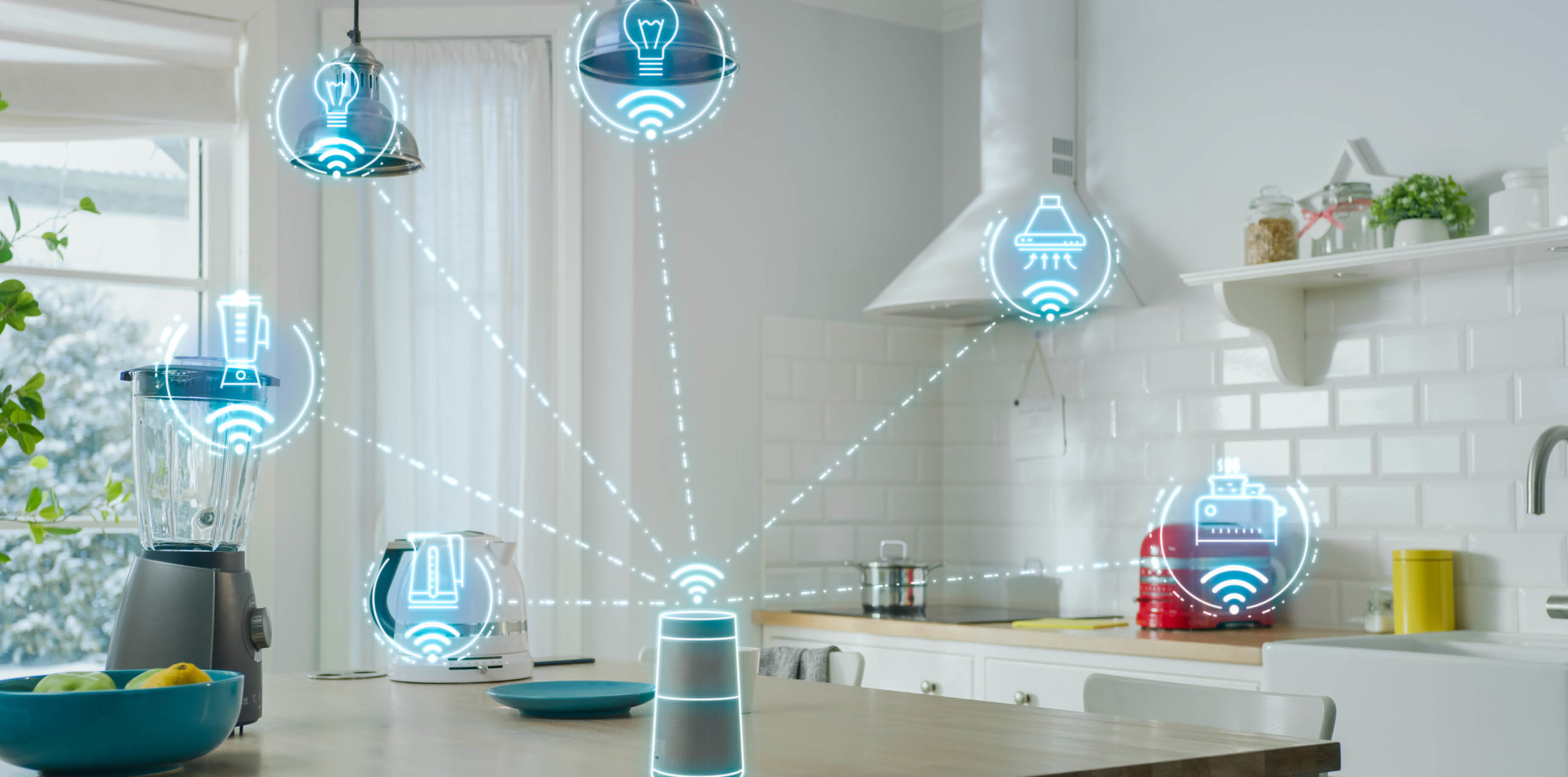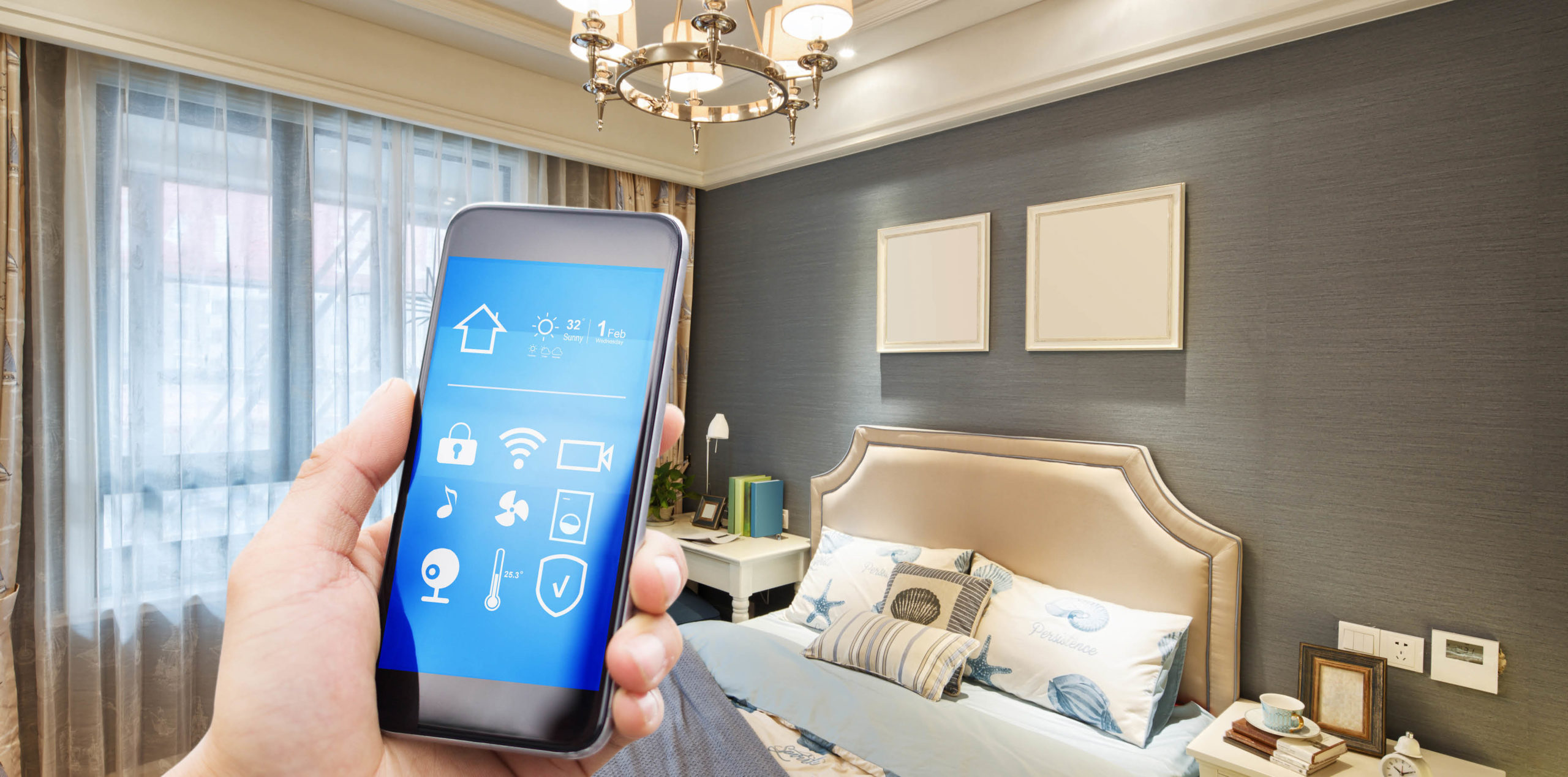by Janice Henshaw –
Smart Homes Defined. Do you have a “Smart Home?” If not now, then perhaps very soon. By 2023 it is estimated that there will be an astonishing 300 million Smart Homes worldwide, and Smart Home market revenue will top US$141 billion (Source Statista). Demand for these products is fuelled by our love of technology, desire to protect our homes and manage our energy consumption. What exactly is a Smart Home? A Smart Home has technical systems and connected devices installed to make life easier, safer and more convenient for the homeowner. Interactive home security systems are one technology leading the way in this sector. This type of system protects your home by detecting motion inside or out, and some can warn you if a new device joins your Wi-Fi network, i.e., a hacker. Smart devices include door locks, cameras, smoke detectors, glass sensors that detect a broken window, and flood alerts. A companion app typically notifies you of any problem, whether you are away at work or skiing down your favourite black diamond run.
Amazon Alexa, Google Assistant and Wink Hub are examples of Smart Home Systems. A Smart Home System refers to the overall command centre. In other words, they are virtual assistants or smart voice assistants with which you can control multiple devices around your home such as music, climate control, lighting, blinds, HVAC system, security and entertainment. The Amazon Echo is an example of a voice-controlled smart speaker for Alexa. One day soon, light switches, keys and passwords will be retro.
Other popular smart devices include toothbrushes, insulin pumps, blood glucose monitors and air purifiers. Pet cameras can allow you to check in and see which pair of shoes Fido is chewing on, and you can monitor your house at the same time. A video doorbell camera lets you know who is at the door without you having to get off the couch. It can also record footage of who comes to your door when you are away (watch out, porch pirates!). One day, the smart device that I hope to have is a robot vacuum and mop (it has a motherboard, lasers, sensors and Wi-Fi!). This self-propelled model guarantees pet waste avoidance (horrible thought!) and automatically empties its dustbin into an allergen-sealed bag. With all that technical wizardry, developing it a bit further and programming it to play with my dog seems a small matter, right?
There might be a smart version for every device that you can think of, or there will be soon. As a caution, though, we must be proactive about cybersecurity in protecting the Internet of Things (IoT) in our homes. A single compromised device can lead to others, thus opening the gate to hackers – and they are out there. Here are three essential tips for amplifying your security: Always create a new password for each Smart Home device – do not use the default password. Ensure your devices update promptly as the manufacturer solves software issues. Purchase well-made devices from manufacturers that treat security as a high-priority issue.
The Future Imagined. We live in exciting times – what some people call the Fourth Industrial Revolution, so let’s check out a morning scenario of the future that may be remarkably close … You are in bed and blue light, your chosen colour, fills your bedroom as the blinds slowly move up to reveal the sunrise. Your favourite song starts playing as you reach a light stage of sleep, so you feel energized as you stretch out on your temperature- and pressure-controlled mattress. The shower is running, and as you get in, you say, “A bit warmer, please.” You close your eyes as your favourite lemongrass soap is sprayed softly over your body like a cloud. After a rinse-off, the towel and warm tile floor feel divine, warmed to perfection. Next, you step on the health scanner, which reminds you to go for a 45-minute walk outside after lunch.
Back in your bedroom, pre-selected clothes for today have popped out of the hidden wall closet. The bed has slotted back into the wall, transforming the room into your workspace. After work, it will again transform – into a living room with form-changing furniture and colours. For now, though, your workstation glides out noiselessly in front of a wall-sized virtual reality stage. Once dressed, the smell of freshly ground coffee draws you into the kitchen, where Olivia is cooking a fresh veggie omelet and buttering the toast. She will have everything cleaned up and a healthy lunch ready at noon before she goes into recharge mode. That’s when Henry will roll out, clean the floors, and entertain Fido.
As you eat your breakfast, Olivia updates you on the news of the day. Out the window, you watch a drone circle and land, dropping off fresh groceries and a new pair of shoes that you ordered to replace the ones that your puppy chewed. The drone picks up your recyclables before flying away. The weather app has alerted the outside sprinklers in the garden not to go on today as it will rain in the afternoon.
As the sun shines through clouds, it energizes the roof solar panels, and the luminous interior walls decrease in brilliance until they are at their optimum level for work. Dolly Parton is singing that old, old song: “Working 9 to 5, what a way to make a living.” You smile ruefully as you walk to your office; the workday for you and a great many others stretches from 9 a.m. to 9 p.m. seven days a week because how else are you going to pay for this 700-square-foot Smart Home and all its super cool technology? You can’t live without it, can you?






